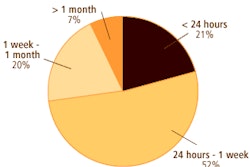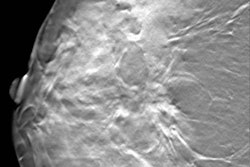In September 2007, the Mammography Quality Standards Act (MQSA) will be reauthorized, a process that could bring many changes for your facility. Although 2007 may sound like a long way off, your facility should start preparing for reauthorization by tuning in to the discussions and watching for signs of what may come.
The best way to track the potential changes is to follow the U.S. Food and Drug Administration's mammography Web site and news regarding mammography studies to see where trends may lead reauthorization authors. In addition, taking courses related to some of the topics under consideration may be beneficial.
The last reauthorization in October 2004 brought several changes, among them a move to allow accrediting bodies to accredit digital mammography equipment, and the decision to have the National Mammography Quality Assurance Advisory Committee hold annual instead of twice-annual meetings.
However, none of the changes did much to affect mammography facilities on a daily basis, and the same is likely to be the case with the upcoming reauthorization. Despite the fact that the changes probably won't be earth-shattering for most facilities, there are topics to watch.
First is a push to regulate interventional mammography under MQSA. This issue has arisen numerous times in the past, and some individuals strongly support the idea of establishing accreditation and inspection criteria for interventional mammography programs. However, each time the issue has come up in the past it has been shot down.
This might be the case with the current effort as well. The FDA has enough on its plate at this point -- namely establishing standards for digital mammography -- without adding this issue to the pile. That said, it's still a topic to watch.
Another issue being mulled is whether to change the audit requirements for facilities that fall under MQSA.
Most people agree that image quality and technical skills have improved since the implementation of MQSA. In fact, a study released in February this year showed that the breast cancer death rate has declined 2% each year since 1990.
Although MQSA wasn't established until 1995, 1990 was a few years after the 1987 inception of American College of Radiology (ACR) accreditation and within a period when requirements for mammography facilities began to increase. However, despite this positive data, there is still room for improvement when it comes to cancer detection.
One area of focus is determining whether interpreting physicians are improving their skills and catching more cancers. It's difficult to assess how these individuals perform without auditing a mammography program and looking at false-positive and false-negative rates -- numbers that can serve to reflect the quality of image interpretation.
However, solving this problem isn't as simple as telling facilities to expand their audits to focus on false positives and false negatives. First, a consensus has to be reached about how they should collect these numbers and which numbers they should use.
To utilize this information, the government needs to establish benchmarks to gauge performance. But determining these benchmarks is difficult because facilities vary in the services that they provide.
For example, at a women's breast health center that sees a large portion of diagnostic patients, the numbers are going to be different than those from a mammography facility that only performs screening mammograms. So, judging these two types of facilities is an apples and oranges comparison.
So until a method is established to provide accurate benchmarks by which to view the data, these issues will likely not move forward. But although the reauthorization will likely bring changes for mammography facilities, don't expect all major mammography changes to come via the reauthorization. The FDA has already moved to make changes to the digital inspection process by requiring inspectors to collect a phantom image to determine whether facilities perform quality control tests correctly.
In the past, inspectors were only required to collect the serial number of the inspection and verify that the facility had a quality control program for the equipment. Future changes will likely be made along the way, rather than by using the reauthorization process as a tool.
While waiting for reauthorization, it's important to keep an eye on potential changes. It's not something you should worry about, but it is something to pay attention to.
By Dan Oakey
AuntMinnie.com contributing writer
April 13, 2006
The "Mammography Regulation and Reimbursement Report," is a 12-page monthly newsletter designed specifically for mammographic technologists and supervisors that is published by HC Pro. The periodical offers ideas for better practice management from peers, billing tips, MQSA regulatory updates and guidance, and business ideas related to breast imaging. For a free trial subscription, please click here.
Oakey is the mammography coordinator for the state of Florida and a certified MQSA inspector.
Related Reading
Geisinger accepts hefty fine for mammo QA failure, March 3, 2006
Preparing for an MQSA inspection: Steps for a successful visit, March 3, 2006
RT admits falsifying mammography QC reports, January 13, 2006
ACR's breast imaging accreditation expands on MQSA, October 11, 2005
MQSA Made Easy, Understanding and Implementing the Facility-Based Final Regulations, August 8, 2005
Copyright © 2006 HC Pro



















